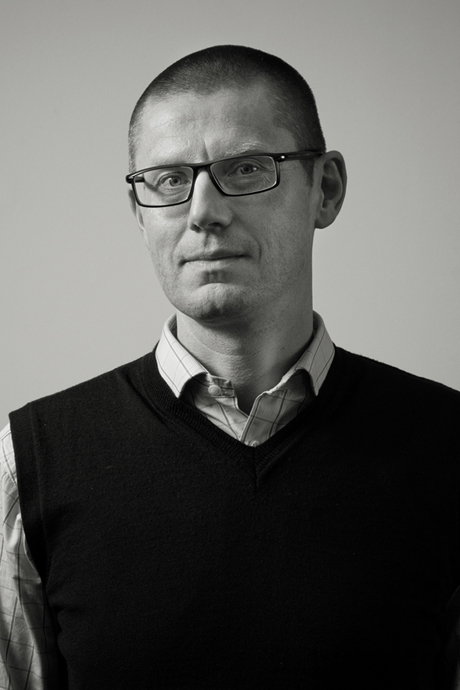Q&A: Finn Butler on wayfinding design

MELBOURNE -- At SmartPlanet, we've written about wayfinding from all different angles; as environmental graphic design, operating system, cognitive map and even as an iPhone app. But as a professional practice, it's still relatively unknown and arguably undervalued.
Pioneering wayfinding as a new discipline is Finn Butler, a specialist with over 20 years of international experience in designing for complex built environments.
Since joining the Melbourne design studio Buro North in 2008, Butler has executed strategies for some of Australia's most public projects including the Royal Children's Hospital Melbourne, Melbourne Convention Exhibition Centre and Westfield in Sydney.
Butler's early career focused on transport wayfinding systems for Terminal 5 at Heathrow Airport, Delhi Metro in India, and the U.K.’s major rail stations.
We recently caught up with Finn Butler to discuss wayfinding semantics -- what it is, why it's important and where it's headed as an industry.

SmartPlanet: Where did the term 'wayfinding' come from?
Finn Butler: I think Kevin Lynch first used the phrase wayfinding in his book Image of the City to describe the process of designing and organising space to facilitate navigation, so in its modern sense the term has been around for about 50 years. As a design discipline, wayfinding is still in its infancy and is still evolving.
SP: Is there an agreed definition?
FB: Many practitioners describe wayfinding design in terms of the navigation of physical space with a strong focus on signage. I personally believe that wayfinding design is the design of navigational behaviour and not signage, which often combines the navigation of physical space as well as processes. This requires the consideration of a broad range of measures, including the development of operational processes, environmental changes and staff training as well as information delivery in the form of signage.
This approach differs from a purely graphic or signage response, as it requires an understanding of fields and ideas that usually exist outside the design field, such as semiotics, affordance and syntax modelling.
Quite often the best wayfinding strategists come from operational backgrounds or from the sciences rather than from a design background.
SP: What are the economic benefits of incorporating wayfinding in a strategy? When is it needed?
FB: Evidence-based wayfinding can provide real economic and operational benefits for clients. Our design process often involves an assessment of the economic cost of poor wayfinding within an environment, and then further testing to measure the impact our completed work has had on navigational behaviour.
On the recently completed Royal Children’s Hospital in Melbourne, we were able to demonstrate that through a range of measures that included a new terminology standard, coordinated pre-visit information and staff training, we were able to reduce the total number of times patients and visitors asked for directions by 82%. Clearly this has an economic value.
However, the truth is that our main motivation is to develop wayfinding strategies that consider the end user and promote good social behaviour; in many ways, our role is to act as an advocate protecting the interests of the end user.
SP: When did you first encounter effective wayfinding?
FB: I started my career developing wayfinding solutions for rail systems, and during this time I spent 18 months working on a project for Transport for London. This gave me an insight into the highly sophisticated approach to wayfinding employed by the London Underground. It was the first time I had been exposed to an organization that considered wayfinding as a critical system, with appropriate investment in research and evidence based solutions. Considering the age of the London Underground’s infrastructure, the volume of traffic it handles and the cultural, and linguistic profile of its users, I would say that its wayfinding system is a great example of type.
SP: In terms of the built environment, what are the considerations when developing a strategy?
FB: The key to understanding wayfinding behavior within a site relies on first understanding the site’s unique user profile. Issues such as stress, cultural and linguistic diversity and prior knowledge of similar environments can all play a critical role in navigational behaviour.
As a result, it is very hard to define the differences between generic types of environments since so much depends on the user profile specific to that site. However, the principle difference between the approach to developing wayfinding systems for airports and hospitals is operational.
Airports have clearly defined operational processes for specific user types, which must be followed to progress through the site, e.g. the transition through Passport Control to Baggage Hall to Customs Arrivals on the International Arrivals Journey.
In contrast to this, patient and visitor journeys within a hospital tend to be unique to an individual, reflecting their disease and treatment profile.
SP: You’ve worked on a wayfinding strategy for a children's hospital. How do children navigate? Do they behave differently?
FB: Understanding the strategies employed by children when navigating was critical when developing the wayfinding strategy for the Royal Children’s Hospital (RCH). It was essential that the language used to describe destinations and processes within the hospital did not use traditional clinical terminology, such as ‘Oncology’ and ‘Ophthalmology’ -- these terms were understood by very few of the RCH’s patients and visitors.
Market researchers The Lab were engaged to test a range of naming, theming and addressing options, with a sample group over 500 children from across Victoria, including children with special needs. The findings were supported by research from other sources, that showed that there were clear differences in the navigational strategies of younger and older children.
It was evident that ward and department names which were simple to pronounce, remember and understand; and which related to environmental cues, were much easier to remember for both adults and children alike.
However, younger children were much more sensitive to changes in their immediate environment either on or adjacent to their path of travel; frequently identifying changes in floor tile colour or miss-matched furniture as major landmarks.
Older children on the other hand, had developed the ability to identify and use distant landmarks, and as a result were able to infer shortcuts, estimate travel times and develop cognitive maps.
These findings not only changed the language used to describe the hospital, but were a major influence in the nature, scale and complexity of the illustrations that supported the RCH addressing strategy.
SP: You work with architects, industrial designers and other specialists in your team at Buro North. What’s the relationship between wayfinding and other design disciplines?
FB: We do have a truly multidisciplinary team at Buro North, but one of the things we do have in common is that none of us are doing what we originally trained to do. I think Buro North suits curious individuals who are not afraid to leave the comfort of their original training in order to achieve new design solutions.
The guys at Buro North are developing and running research that generates primary data, that provides our clients with insight into how their organizations communicate with their users. Often their original training as architects, landscape architects, industrial designers and graphic designers provides them with an understanding of the value of evidence-based design.
SP: You've mentioned 'evidence-based solutions'...how do you know if your ideas have worked?
FB: Being able to measure the effectiveness of our designs is an important part of the story. I could ask: “why would you design if it wasn’t to make things better?” and if that’s true, having made things better, the next question must be: “how much better did we make it and could we have improved the outcome?”
In the case of the RCH, we ran tests over two days using both adults and children. We set navigational tasks and measured their performance across a number of key criteria including time taken, navigational error, recall and stress. The results were encouraging as they showed a 45% reduction in the average journey time. At the end of each test, each test subject was asked to describe their journey, 67% of those tested were able to describe their journey in no more than four steps frequently referring to themed landmarks and sculptural elements located strategically within the hospital.
SP: Wayfinding is a relatively young discipline. Where is it headed?
FB: Currently the discipline of wayfinding is practiced by designers, typically from either a graphic or architectural background (myself included). As a result, the focus is still on the design of the graphic content and forms of physical signage elements. This is reinforced by the industry as a whole, that celebrates technical and aesthetic merits of signage systems through its awards and publications. When was the last time a wayfinding system was celebrated in the journals for developing primary data, through innovative research that provided a game changing shift in a client’s business or the experience of the user?
The truth is that much of the exciting work taking place in the field of wayfinding is not being done by designers at all, but in the behavioural and environmental sciences.
Currently, these disciplines are poorly represented in the field of wayfinding consultancy. I believe that this will change, and when it does, wayfinding will move closer to becoming a distinct discipline taught at our universities.
Photo: Buro North
This post was originally published on Smartplanet.com
